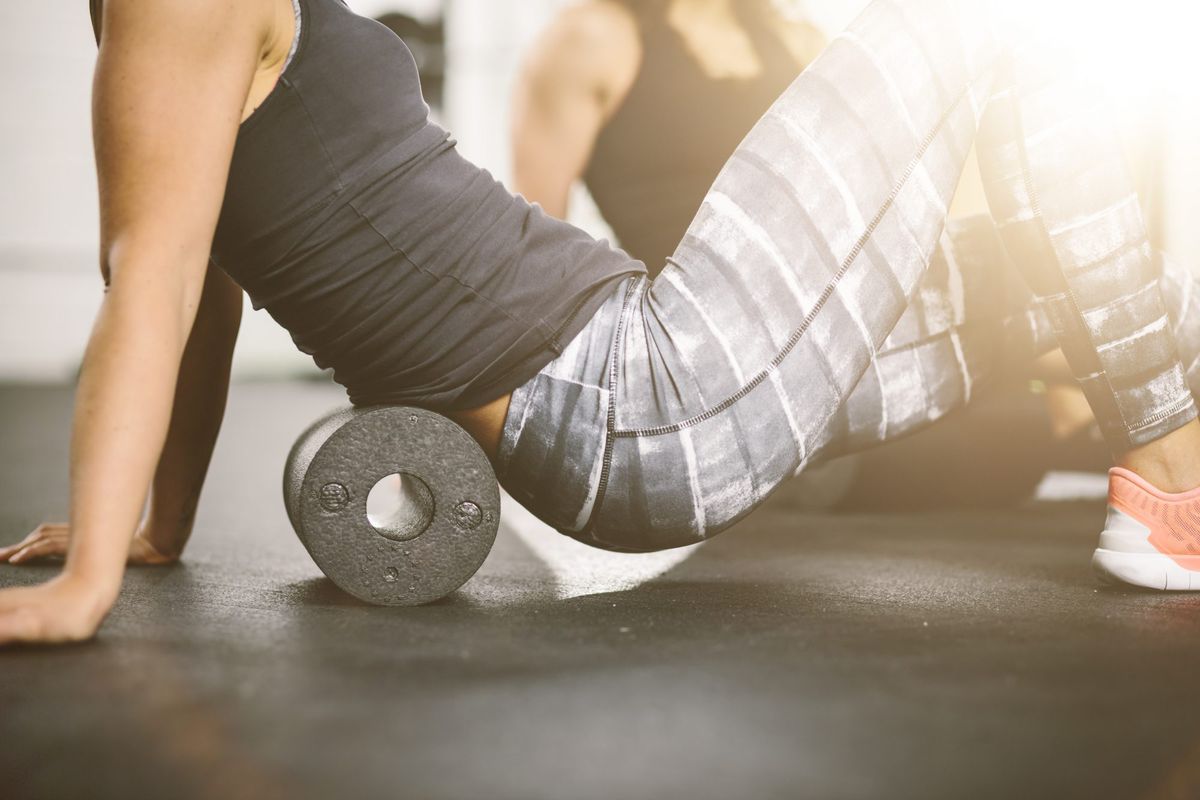Using a foam roller is a proven way to loosen tight muscles, speed recovery after a tough workout, and prevent injuries. Lately, though, we've been hearing about another big benefit of rolling out: banishing cellulite. The FasciaBlaster, MELT Rollers, and Be Aligned Rollers all promise to erase those annoying lumps and bumps under the skin.
Cellulite affects all body types—even people who are super-fit and toned—and up to 90% of women will experience it in their lifetimes. So it seems almost too good to be true to think that massaging your body with a foam cylinder could make dimples disappear on your legs and butt. But it turns out it does work—sort of.
First, it’s important to understand what cellulite really is. “Cellulite is a genetic condition that makes you predisposed to having fibrous bands between your fat cells,” says S. Manjula Jegasothy, MD, dermatologist and CEO and founder of Miami Skin Institute. Everyone has a layer of fat separating their skin and muscles; for some, this fat layer lies smooth, but those with lots of fibrous bands wind up with that cottage cheese appearance on the surface of the skin, says Dr. Jegasothy.
The idea behind foam rolling for cellulite is that it breaks up and loosens fascia (connective tissue that protects and separates muscles), Dr. Jegasothy says, allowing fat to lie flat under the skin. And after some foam rolling or self-massage with a myofascial release/trigger point ball, you will see some skin-smoothing benefits. “What myofascial release devices might do as a side effect is create a little bit of superficial edema, or swelling, and that can actually make the surface of the skin seem a little smoother,” says Dr. Jegasothy. “That’s why people think maybe it will improve the appearance of the dimpling from cellulite.
If a quick visual improvement is what you want, then roll away. Just don't expect the results to last for more than a few days. "It doesn't do anything for the fibrous bands, and it's a very transient effect…so we don't consider that a viable treatment for cellulite," Dr. Jegasothy says.
New York City-based dermatologist Whitney Bowe, MD, agrees. "It can temporarily help. Foam rolling is essentially plumping up the dermis, which overlies the pockets of fat that tend to bulge in cellulite. This makes it hard to see the uneven fluctuations beneath as easily—hence the improvement in the appearance of cellulite," she says.
If you’re looking for a more long-term treatment for cellulite, Dr. Jegasothy says there are two effective treatments. One, radio frequency, is a device that tightens the fibrous bands that create cellulite so they lie flat against the skin. Results last for three to six months. “The cellulite does come back,” says Dr. Jegasothy. “People age on an ongoing basis and form more fibrous bands, so it does require maintenance.”
RELATED: Does Dry Brushing Really Reduce Cellulite?
The other treatment option helps with deep dimples. It’s called Cellfina, and it’s a machine that actually cuts and releases the fibrous band that’s pulling down on the skin and creating the dimple.
If you want to try to foam roll away your cellulite, go for it. There's no danger in doing so, and your skin may smooth out temporarily. Just don't expect your dimply skin to go away forever—and remember, you're in good company.
